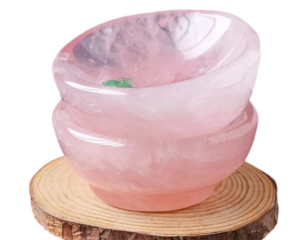Amber is the fossilized resin of trees of the prehistoric period. It gains importance for its various properties and contributions in various fields. The breaks in the barks of the ancient trees exude resin, which hardens eventually and drops down on the ground. As time passes, it gets buried under the ground and it hardens still. Millions of years later, the resin gets fossilized completely, which is called amber. The stage much before completion, the resin is called copal, which is immature resin.
Amber has been found in various places across the earth in the rocks of Cretaceous era. In some places, amber is found by mining. The major deposits of amber are found off Baltic Sea shores and the North Sea shores. The waves throw up amber, which are collected by diving or dredging and if it is on ground, collected by hand.
Amber In Baltic Region
Since the prehistoric times, Baltic Sea region has been the major contributor of amber. By Baltic sea region, we mean the countries including Baltic countries namely Latvia, Lithunia and Estonia and Nordic countries namely Norway, Sweden, Denmark, Finland, Iceland, Poland, Northern Germany and the Northwestern region of Russia called Kaliningrad. Amber has been used since prehistoric times and some of the evidences available point out that they have been used as far as 3200 BC. Great numbers of Neolithic artifacts deposits are made of amber, which have been found around these sites and they belong to the period between 2500 and 1800 BC. Baltic amber’s significance as medicine was realized millions of years ago. Pieces of Baltic amber were inserted under Egyptian mummies’ skin to prevent them from decaying. Various cultures believed in the power of Baltic amber as they widely used amber for various medical conditions and as a symbol of power.
Amber In Dominican Republic
Amber found in Dominican Republic is a rare variety and a very attractive one too. Blue amber is the most attractive amber found in Dominican Republic. The specialty of blue amber is that it does not look blue when you look at it. When a natural light passes through the amber when kept on a white surface, the amber takes on a light blue color. It is unlike any other amber and hence it is very special. Only small amounts of blue amber is found which makes it even more special.
Amber In Italy
Amber found in Southern Alps in Italy is called Dolomites amber and this is the oldest of all ambers. It dates back to the Triassic period. The colors of this amber vary from yellow to brown. It has inclusions and they are microorganisms and small fungi. Recent research results reveal the presence of arthropods belonging to the Triassic period in the amber.
Amber In Burma (Myanmar)
Burmese amber belongs to the early Cretaceous period. Mostly, the colors of Burmese amber are clear and they vary from red color to brown. They contain many inclusions and the special feature about Burmese amber is that the inclusions are well preserved.
Amber In Ethiopia
Ethiopian amber is the first genuine amber found in Africa. It dates back to Cretaceous period and it is yellow in color. The inclusions in Ethiopian amber include fragments of plants, microorganisms and flying insects.
Amber In USA
New Jersey amber belongs to the later stage of Cretaceous era. It is translucent and the color ranges from yellow to red. The specialty of New Jersey amber lies in the inclusions, which crosses 100 unknown species. The oldest bee ever known called Trigona Prisca is found as inclusion in New Jersey amber.
Amber In Lebanon
Lebanon amber dates back to the early Cretaceous period and it is found in Jezzine in Lebanon. Its colors include translucent yellow and honey color. Though it has many inclusions, the preservation level is low.
Amber In Japan
Japanese amber is mostly found in Kuji in Northern Japan. It belongs to the Cretaceous period. The colors vary from green to black. Seismic tremors have resulted in the cracking of most of the ambers in Japan.
Amber In Switzerland
Switzerland amber is found in lignite sandstones near Bern and Fribourg. It belongs to the later stage of Eocene era. The colors are transparent and they range from honey yellow to orange brown. The special feature about this amber is that it exudes bluish white fluorescence when shown under ultra violet light.
Amber In Ukraine
Ukrainian amber is found in Western Ukraine. It dates back to Eocene period. It is mostly brown in color and the other colors in which it is available includes brownish yellow, light green and greenish white.
Amber In Romania
Romanian amber is found on River Buzau banks. It dates back to early Oligocene. The colors in which Romanian amber is found are black, brownish yellow and reddish brown. The inclusions are rare and if present, they are poorly preserved. The colors are the special attractions in Romanian amber.
Amber In Canada
Canadian amber is found in many parts of Canada. It belongs to the Cretaceous period. It is available in red and brown colors. The inclusions are many and they are found in regions where dinosaur bones occur along with amber.
Amber In Borneo
The specialty of amber found in Borneo is that it is the largest of all amber and it weighs up to 30 kg. It is found in North Borneo in Malaysia. It is mostly in dark brown color.
Amber is found in various other parts of the world. The history of amber and the history it relates to us fascinate us and it throws light on the secrets of the earth. Amber indeed is special regardless of where it is available.


























